How to create a client portal with WordPress
In this article, we’ll be exploring how to create a client portal using WordPress plugins. We’ll see how you can use your portal to manage customer interactions, as well as some of the tools that will help you improve and manage your WordPress client portal.
What Is a WordPress Client Portal?
A client portal is a private, protected website where you can share and exchange private information with your clients. It provides a set of collaboration tools that help your clients to share information and communicate efficiently. A client portal is also used for client management. In short, it’s a quick way for your clients to see progress and manage their projects. It is valuable as a self-service tool. Pretty much like an automated and always updated progress report.
What is a members-only area?
A WordPress member-only area is a restricted section within a WordPress website accessible only to registered users with specific roles or permissions. This secure space, usually created with a WordPress membership plugin and named the members’ area, is typically employed to provide exclusive content, services, or features to authorized members, serving as a privacy and access control mechanism in WordPress user management. Access to this area is granted based on user roles, custom capabilities, or other access control settings, allowing website administrators to curate and manage user experiences, enhance member engagement, and maintain data privacy and security.
What are the benefits of building a client portal?
When you use a WordPress client portal, your own team and your clients will have a single point of contact. You get to know your customers much better, and you have a whole new set of information to work on.
Creating a WordPress customer database has several benefits, including:
- Better organization: A customer database allows you to store all of your customer information in one place, making it easy to find and manage WordPress user data.
- Improved customer relationships: By storing customer information in a database, you can better understand your customers and provide them with personalized experiences.
- Increased efficiency: With a customer database, you can automate repetitive tasks, such as sending follow-up emails or creating targeted marketing campaigns, saving time and increasing efficiency.
- Better data analysis: A customer database comes with a custom WordPress dashboard and reports that provide valuable insights into your customers, such as purchasing habits, preferences, and feedback. This information can be used to improve your business and make data-driven decisions.
- Enhanced security: WordPress has robust security features, and by creating a private client portal and storing customer information in a database, you can ensure that it is protected from potential security threats.
- Easy integration with other tools: WordPress customer databases can be easily integrated with other tools, such as email marketing platforms, payment gateways, and analytics software, to provide a more seamless experience for your customers.
By creating a WordPress customer portal and WordPress customer database, you can improve your relationship with your customers, enhance user experience, increase efficiency, and make data-driven decisions to grow your business.
Let’s see what features you need to have in your client portal.

What features should a client portal system provides
There are many good features to keep in mind for the ideal client portal with WordPress. A custom workspace is a good starting point. A workspace can be used to concentrate all assets related to a project, as well as discussions. It works similarly to one of your HD folders, but online.
Building upon the concept of a workspace, a client portal may allow file sharing as well. It can be used as a file-sharing tool for individual clients, or even client types. From general demo files for a plugin or theme to custom configuration files for a particular client.
In addition, a client area wouldn’t be complete without communication tools. It’s possible to allow customer-to-customer communication, private page access, and private channels as well. This includes docs, tutorials, support, and even requests. Hence, it’s possible to get feedback on projects or ideas for future releases.
Client portal as a private, protected website where you can share and exchange private information with your clients.
Furthermore, a customer WordPress portal needs to be able to manage users. Tools related to CRM (Customer Relationship Management) are a great addition. It’s possible to track down key influencers in each of your clients. You can gather all their information, projects, and actions in a single place. In addition, a CRM can be used to predict future user actions, and act on them. It’s an opportunity to build a better relationship, gather feedback, or to secure a sale.
Depending on your business, it may be good to have reports and finance management. From payment management to customer niches. Let’s see how to do that now.
Installing and Configuring Plugins
To create a client portal, you’ll need to extend the functionality of your WordPress website. This is where plugins come in. WordPress has a vast library of plugins that can add new features and functionality to your website. Here are some plugins you may want to consider installing:
- User registration: These plugins allow you to create a registration form for clients to sign up for access to the client portal.
- Content restriction: These plugins allow you to restrict access to specific pages or posts on your website to only logged-in users.
- User management: These plugins provide a dashboard where you can manage WordPress users, including tracking user activity and managing WordPress user data.
- File management: These plugins allow you to upload and manage files, such as project documents, customer invoice, in the client portal.
You may need to configure the different plugin settings to suit your needs.
Best Plugins for Building a Secure WordPress Client Portal
Now that you understand the benefits of using client portals for WordPress sites better, it’s time to learn how to build one. Here are 14 helpful plugins for creating a secure WordPress client portal:
- BuddyPress for creating clients portal in WordPress with social network type of features, forums, messaging, profile pages
- LeanDash for customer portals that are more oriented toward client education, creating learning and courses.
- Paid membership Pro for memberships-based portals with features like memberships checkout, account details management, recurring payments, etc.
- Ultimate Member is another free alternative for building membership-based client portals with tools to build online communities. It includes features like user registration, profile builder, custom fields, user login, private page, and restrictions, etc
- MemberPress is another popular WordPress membership and client management plugin. It provides features like password-protected forums, private content, user access control, profile management, client login, etc.
All of the above-mentioned plugins work within your WordPress site and therefore allow you to create an unlimited portal with multiple clients or even unlimited clients. Clients can have their custom login area or use the default WordPress login form.
You can even have your own private client portal where your clients don’t have an access to the portal but you can add and create the client accounts manually. This type of setup can be used in more project management or contact management manner.
How to create a secure client portal with WordPress and BuddyPress
There are many WordPress client portal plugins. Some of them may not be advertised as such, though. BuddyPress is one of them.
Think about it this way, although is not a dedicated WordPress client portal plugin, BuddyPress turns your site into a social network. Therefore, right off the bat you already have their own workspace. This is accessible using their profile, groups, and pages that they have access to. Furthermore, you have communication tools. Users can send and receive messages. They can add comments to pages (projects) as well.
But in order to get a full WordPress client portal, we need to extend its features using plugins.
For instance, file sharing can be done with a plugin like BuddyDrive:
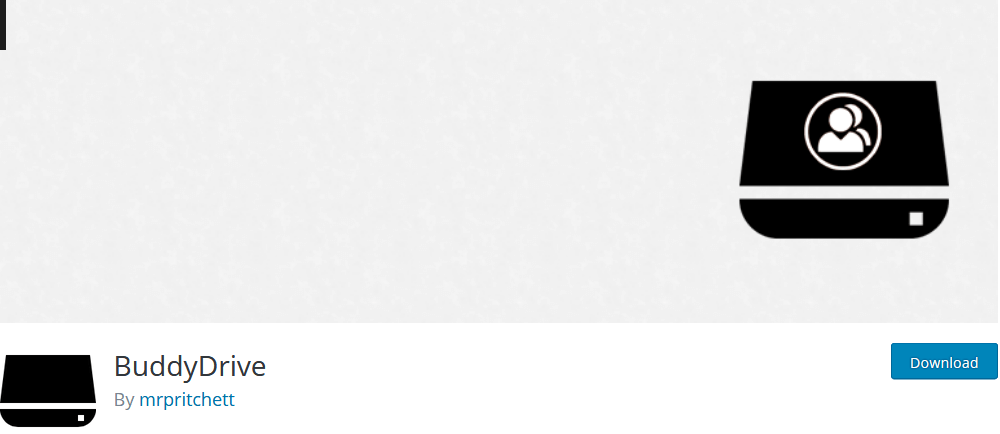
This plugin allows the upload of files that can be shared across multiple users. Files can be set as private, public, group-specific, friends-only, or specific members-only.
Then you’ll need some tools to improve your collaboration tools. The TaskBreaker plugin is going to help you with that.
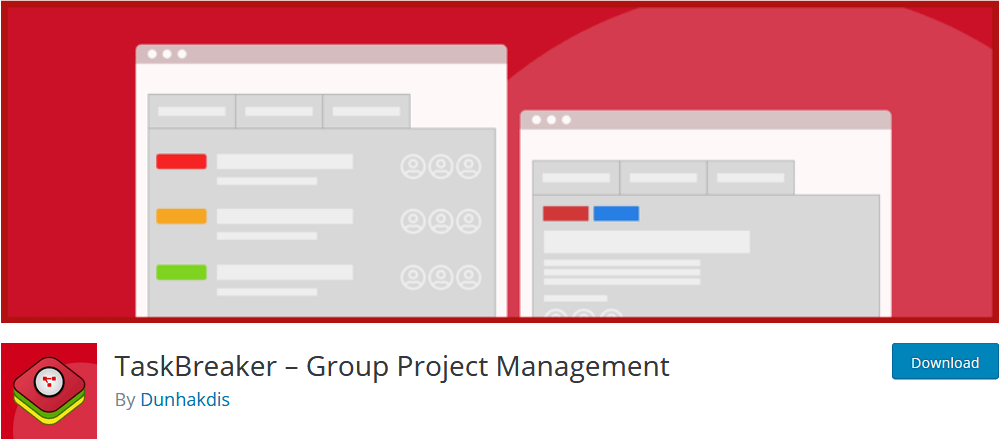
This is a WordPress plugin that adds some project-related functions to BuddyPress. With it, we can create projects, assign them to members, and check the project’s progress. The progress is measured through tasks, which can be discussed via comments.
Then we need a tool for our CRM and reporting. For that, we can use Users Insights. We have some guides on how to use Users Insights as a CRM. But you can use the smart filters to get to know your customers a little better. Let’s dive into these functions now.
Client Management in your WordPress Client Portal
A big part of your client portal is getting to know your customers. With Users Insights, we can get a better picture of individual users as well as their aggregate behavior.
When it comes to individual user actions, we can check their user profiles. There we can see everything they have created, such as file uploads and tasks created:
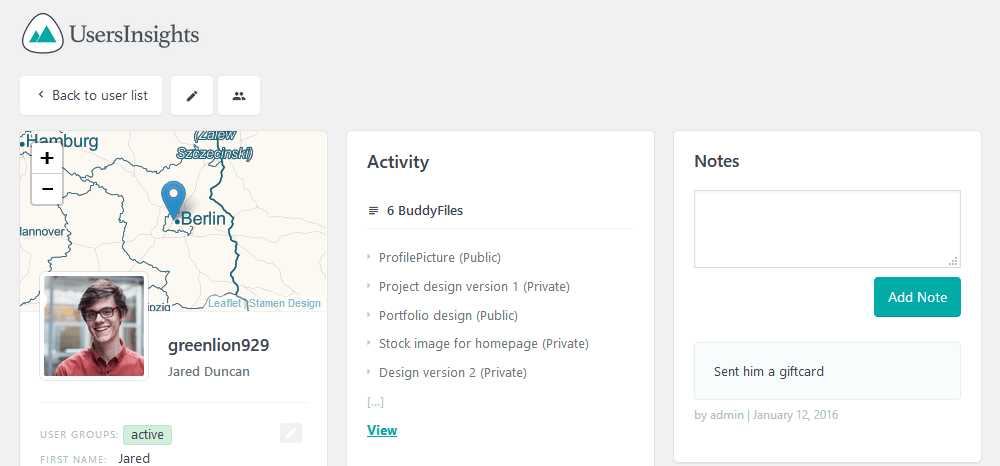
We can check other customer actions, such as their payments made, comments, posts, and other user-generated content. In addition, any custom user fields are going to be shown in their profile. These custom fields are usually created by your own theme or other plugins. They often collect data about your users that can be processed later on.
Then we can see the user actions on the users’ table as well. It’s possible to filter them by the number of comments created, for instance:
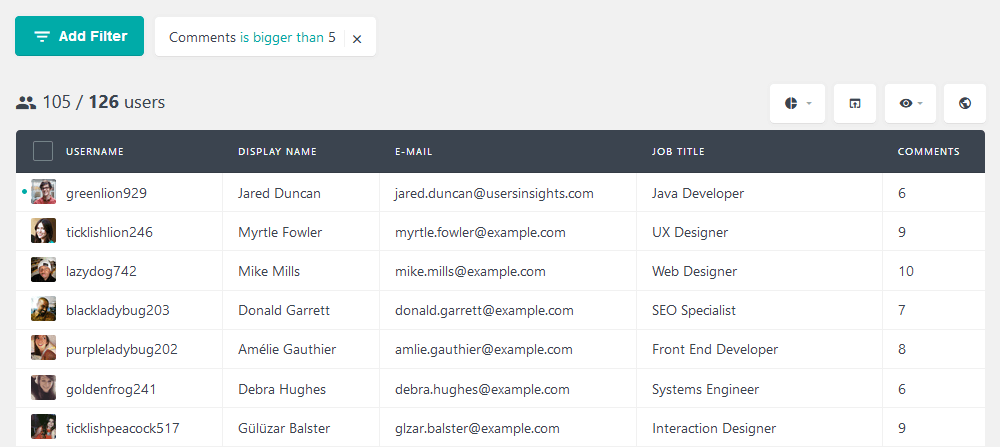
In addition, If we use custom fields to collect some additional customer data we can use them in our filters as well. For example, if you want to filter all the developers on your site you can do so:
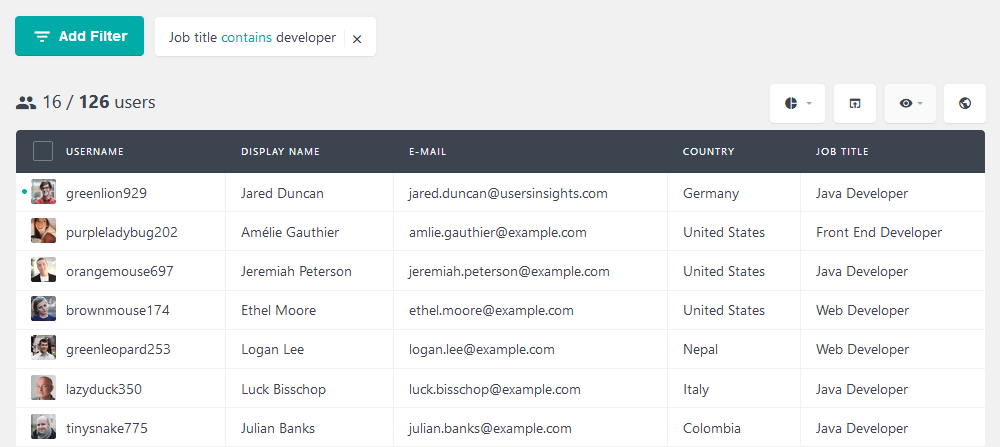
Furthermore, it’s possible to collect user submitted data. If you use a plugin such as Gravity Forms, you can enable the User Registration AddOn. Then, it can be used to collect and aggregate user information. It’s possible to collect custom fields, by creating a profile form. Hence, you just need to filter out users based on their answers:

However, the true power lies in gathering user feedback. It is possible to gather customer opinions and check this data for individual users. For example, you can collect their feedback on how well your team did on a particular project. This can be even broken down into different tasks, or key aspects of your tool.
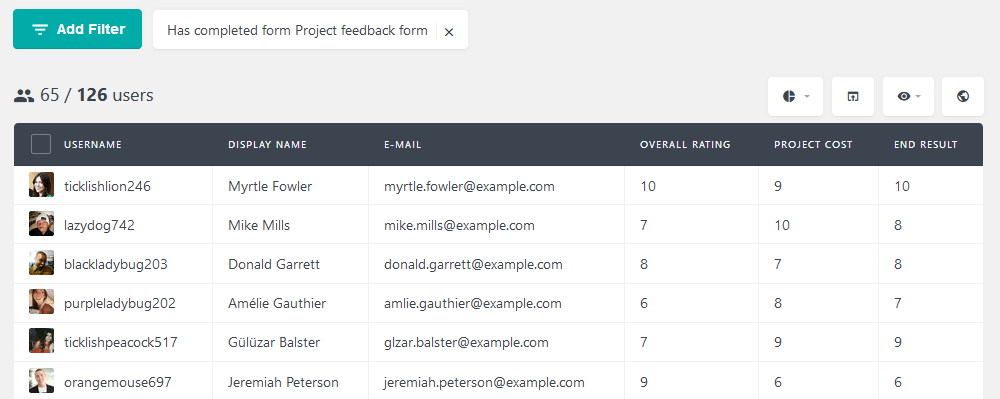
This type of information can help improve your client management portal. You know their opinions, and you can use your relationship for even further feedback on problematic points. In addition, this can be used as a feedback tool to praise your team on their good work.
WordPress Customer Portal Reports and Dashboard
Individual user reports are very useful. However, sometimes we need to take a step back and look at the overall results. In these cases, we create our own customer reports and client dashboard. We can do this with the WordPress reports feature of Users Insights that is available in your WordPress dashboard:
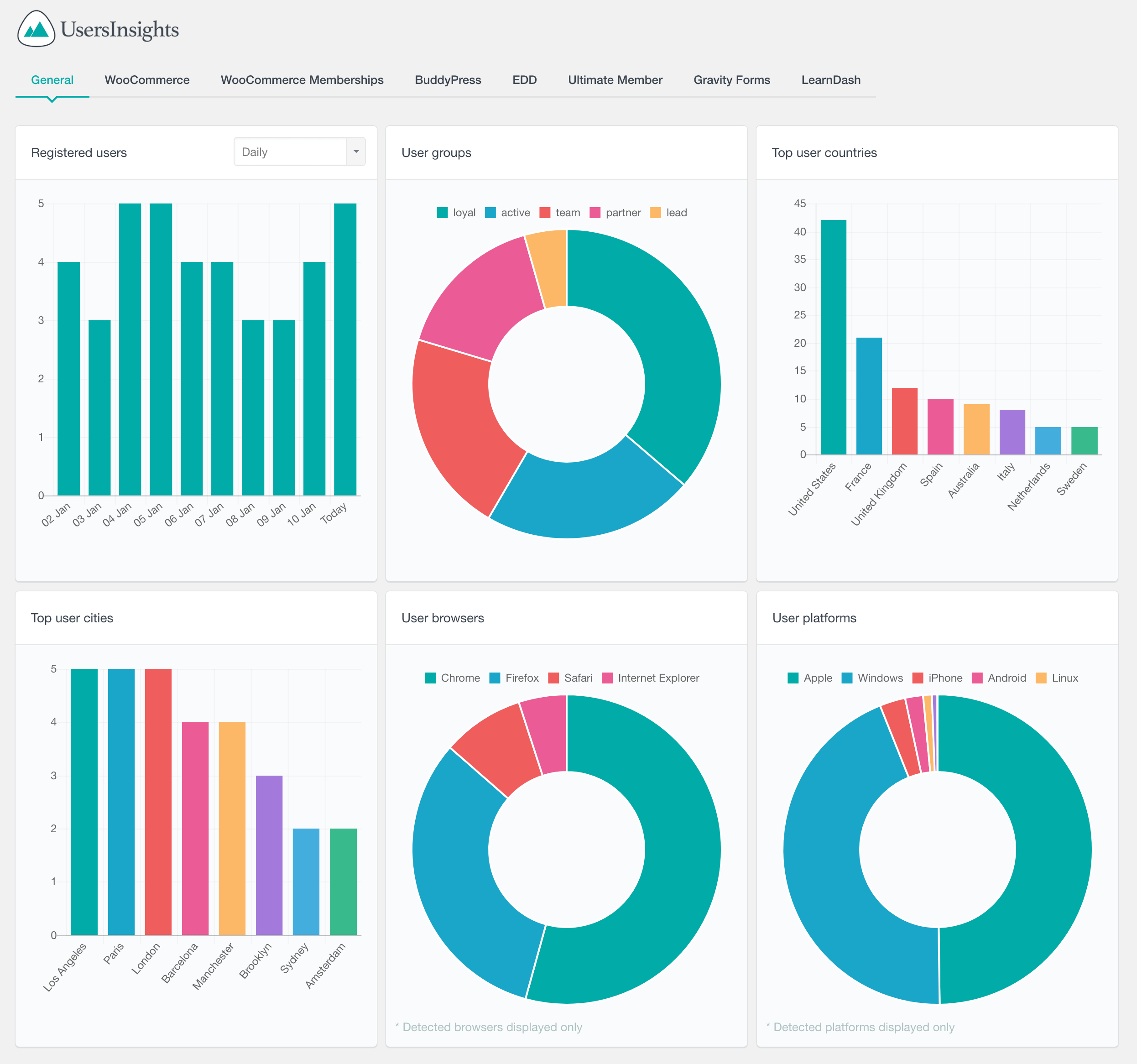
Many different types of reports can be useful for analyzing customer data. For example, aggregate data can be used to identify the most profitable customer segments. You can filter your customers by country, occupation, age, company size, and other criteria. This kind of information helps us to build a more accurate picture of our ideal customers.
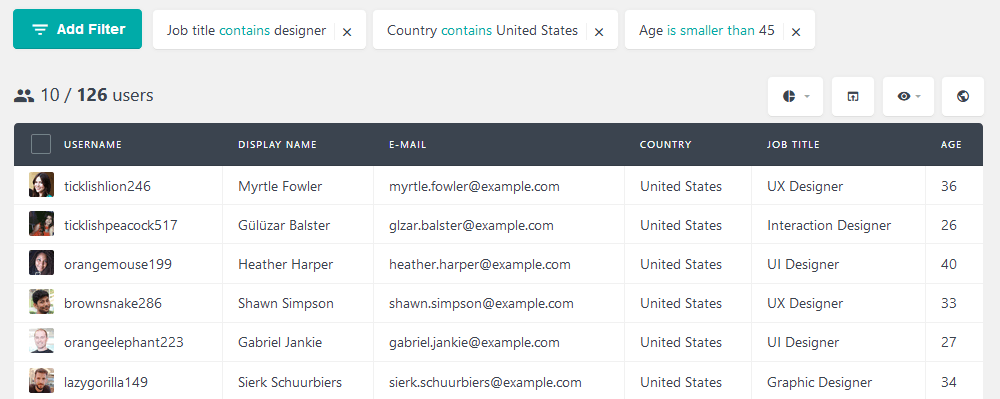
To identify the most active customers in our WordPress customer portal, we can review the order count and lifetime value. If your customer portal is connected with an e-commerce solution, like WooCommerce, this information is easily collected. You just need to activate the WooCommerce module for Users Insights.
Then let’s filter users based on their orders. We can order users based on other fields, such as the Lifetime Value by clicking on that column:
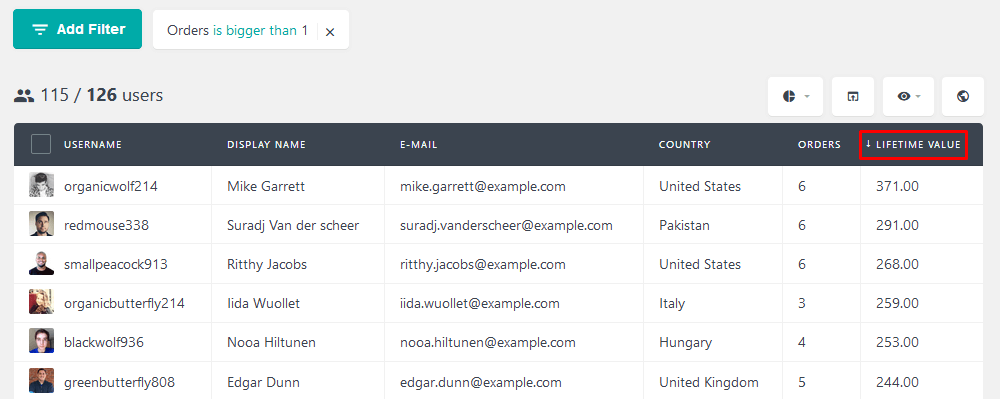
In addition, it’s possible to get a better picture of the project types we run in our WordPress client portal. This can be done if you collect the project size using a plugin such as gravity forms. We can make that column visible and export our biggest ones:
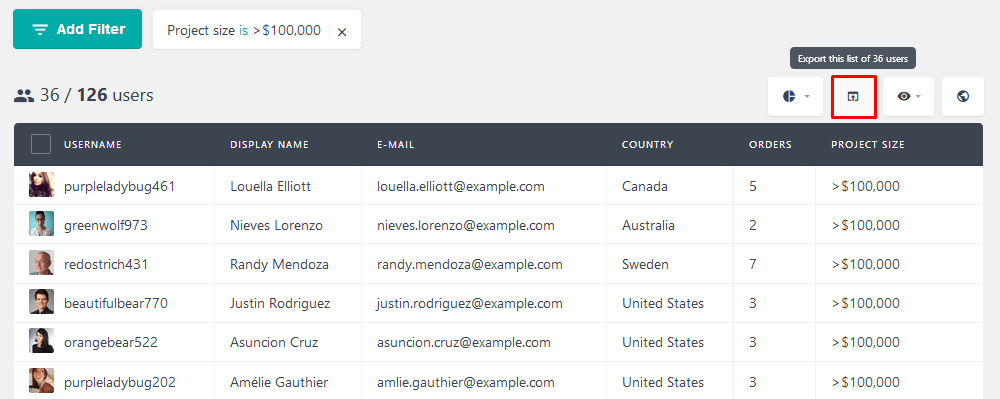
Users can tag projects with different information types. For instance, it’s possible to tag all projects depending on their nature, apps, sites, and design. Later, you can filter all users with design or app development projects.
As we’ve mentioned before, occupation is an important field. But others can have some creative uses as well. The main language a user speaks can be a deciding factor as well. For instance, if you notice that you have a lot of Spanish speakers, it may be wise to hire staff who can speak it as well.
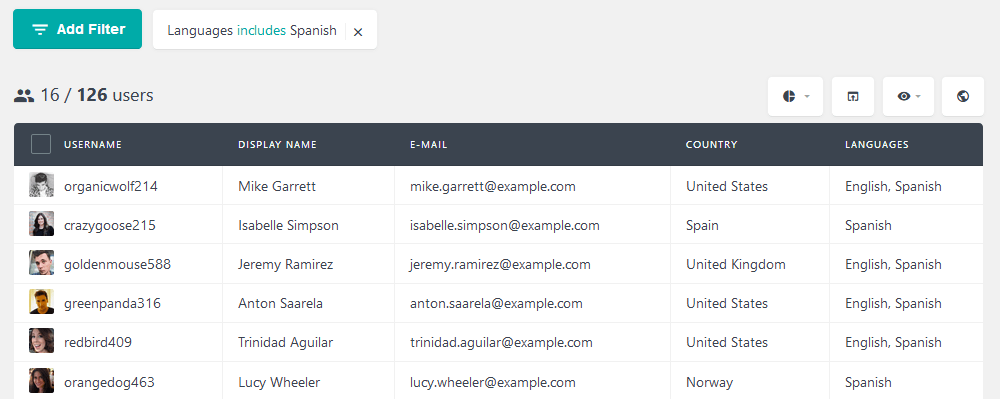
Conclusion
Creating a client portal in WordPress is a great way to provide a personalized experience for your clients and streamline communication between you and them. Following these steps, you can easily set up a secure and functional client portal that meets your needs. With the power of WordPress and the right plugins, the possibilities are endless. We hope you enjoyed this article and see you again next time!
